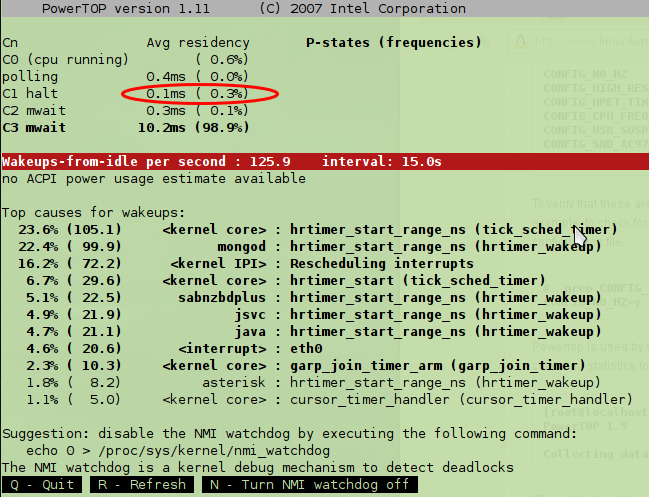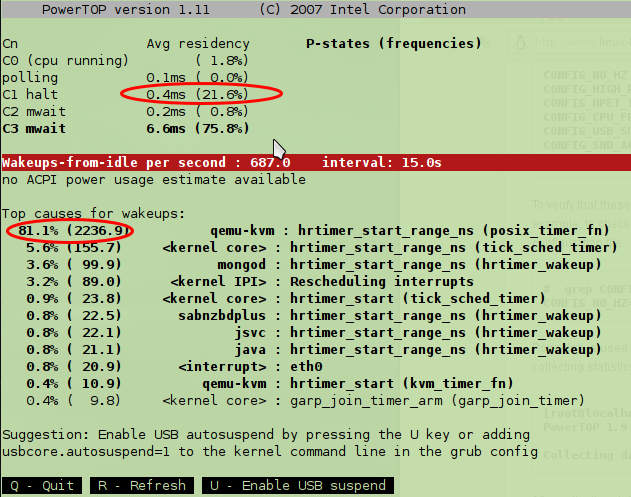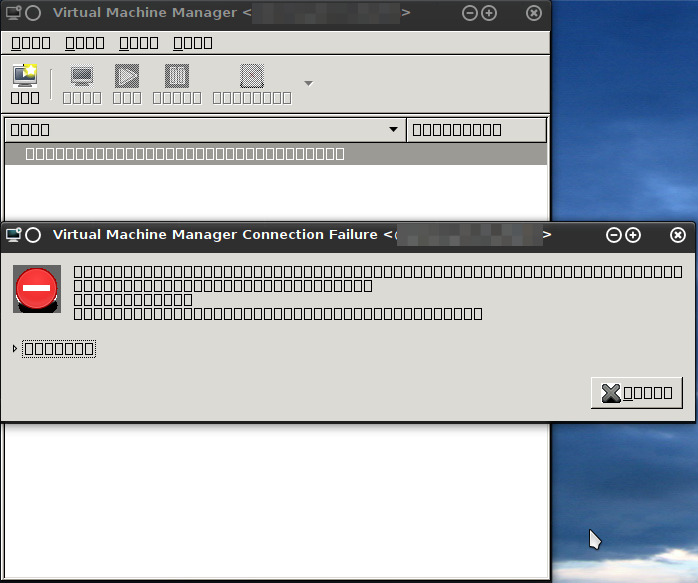A1 Telekom Austria Internet via UMTS seems to have a forced disconnet every 8h
December 31, 2011
I think it is well known that the DSL Internet plans from A1 Telekom Austria for private user (= not the more expensive business plans) have a forced 8h disconnect. I searched the Internet to check if it is the same for there UMTS USB sticks, and couldn’t find anything – seems that nobody cares or tried it. So I put the USB Stick into my server and let it run for a week now, and I can say now: Yes, there is a forced disconnect normally every 8h … but sometimes they seem to miss it. Take a look at the last few days – I did a grep on the connect time and the pid of the umts pppd:
# cat /var/log/messages | grep "Connect time" | grep "9069"
Dec 27 20:56:17 xxx pppd[9069]: Connect time 480.0 minutes.
Dec 28 04:56:53 xxx pppd[9069]: Connect time 480.0 minutes.
Dec 28 12:57:00 xxx pppd[9069]: Connect time 480.0 minutes.
Dec 28 20:57:05 xxx pppd[9069]: Connect time 480.0 minutes.
Dec 29 04:57:42 xxx pppd[9069]: Connect time 480.0 minutes.
Dec 29 12:57:49 xxx pppd[9069]: Connect time 480.1 minutes.
Dec 29 22:20:09 xxx pppd[9069]: Connect time 561.8 minutes.
Dec 30 06:20:44 xxx pppd[9069]: Connect time 480.0 minutes.
Dec 30 14:23:20 xxx pppd[9069]: Connect time 482.5 minutes.
Dec 30 22:05:07 xxx pppd[9069]: Connect time 461.7 minutes.
Dec 31 06:05:44 xxx pppd[9069]: Connect time 480.0 minutes.
Dec 31 14:06:21 xxx pppd[9069]: Connect time 480.1 minutes.
ps: 480min = 8h
Somebody knows why they are missing some disconnect times? Maybe it is traffic related – I try to make some traffic every few seconds on the link to verify that.
Idle SL/Centos machine in KVM leads to 5 Watt more power usage
December 25, 2011
My home server needs in idle state less than 25 Watt (Intel Core i3-2100, SSD for the system, 2TB HD) but as soon as a KVM machine runs I need 30 Watt. It does not matter if the virtual machine is idle. As guest I’ve a RHEL6 Clone (Scientific Linux) running with the virtualization modules loaded:
# lsmod | grep virt
virtio_balloon 4281 0
virtio_net 15741 0
virtio_blk 5692 3
virtio_pci 6653 0
virtio_ring 7169 4 virtio_balloon,virtio_net,virtio_blk,virtio_pci
virtio 4824 4 virtio_balloon,virtio_net,virtio_blk,virtio_pci
But take a look at the screenshots – the first without running KVM virtual machine …

… and as you see the CPU is 98% of the time in C3 (lowest power consumption). And flowing screenshot shows the same computer after starting a KVM virtual maschine and waiting some minutes to settle ….

… and now we’re 20% in C1 and only 75% in C3, and the reason with the highest percentage is qemu-kvm.
Now you ask how I know the power usage increase by 5 Watt? I have have a Watt-meter connected between the power outlet and the computer to measure the power usage.
Anyway, I currently don’t have a solution for this, maybe a reader has.
A1 Telekom Austria uses internal IPs (10.x.x.x) for traffic between UMTS and DSL
When I tried to connect from my mobile phone to my DSL router at home and had tcpdump running on the router at the same time I though there is something wrong. I saw connection requests from an 10.62.35.x IP address from the Internet. My router was of course dropping these packets, as this IP address cannot arrive on the Internet uplink interface.
After some checking I realized that my mobile phone is the 10.62.35.x source address, and I needed to accept packets from on the Internet with the source address within the range of 10.62.0.0/16. It is good that I don’t use 10.62.0.0/16 subnets at home …. but if someone does, he has a problem. 😉
Anyway has anyone more information which 10.x.x.x IP addresses the A1 Telekom Austria (and Bob for my mobile) does use?
ps: The DSL router has a worldwide IP address but the mobile IP is local, surely to force businesses into more expensive plans to have a worldwide IP address. 😉
How to fix the font for virt-manager via X forwarding
December 24, 2011
I’ve installed the virt-manager on one of my servers (RHEL/Centos/SL) and tried to access the virt-manager via X forwarding but I just got following:

Other programs like xclock or xterm worked without problem .. after some searching and debugging I solved the problem with following command:
yum install dejavu-lgc-sans-fonts
Hope this solution spares someone-other some minutes. 😉
Powered by WordPress
Entries and comments feeds.
Valid XHTML and CSS.
29 queries. 0.060 seconds.





